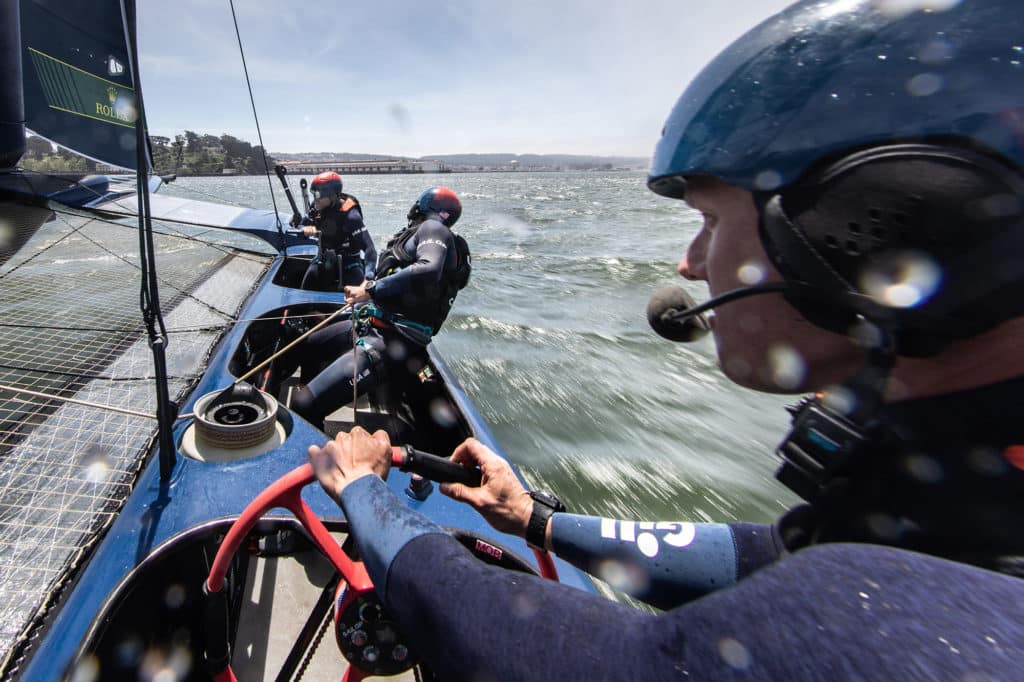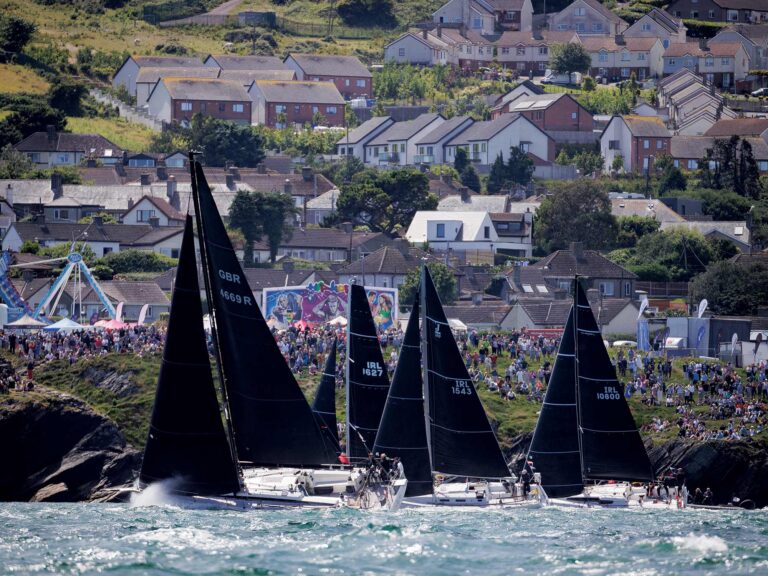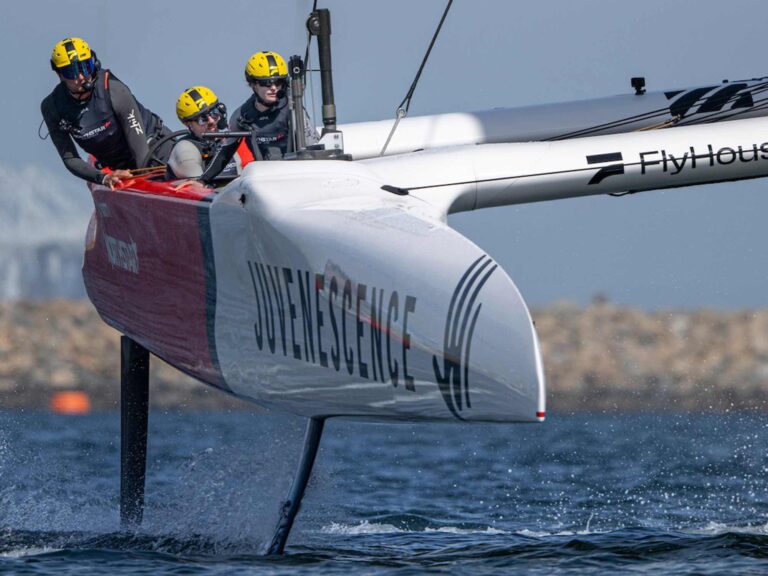
SailGP Event 2 Season 1 San Francisco USA
Was young Rome Kirby in over his head when he said yes to leading the first U.S. SailGP Team months before the start of SailGP’s first season? You bet. To be fair, most professional sailors of his background, pedigree and caliber would have imploded under the immense weight of responsibility placed into his lap six months before the first event: build a team from scratch, manage the team, lead the team, manage a budget and oversee the logistics of the international circuit, show up for TV spots and sponsor engagements, getting pulled this way and that. And, oh yeah, figure out how to win races while getting a super-powered 50-foot flying catamaran around the track—without breaking it or hurting anyone.
Yet, sign up he did, back in April of 2018, with visions of glory, a paycheck, and lofty expectations that fell well short when the season concluded with Kirby and Co. slumming in the basement of the six-team standings. The U.S. squad had its moments, including winning one race in New York, but there were more downs than ups, and when it was all said and done, Kirby’s assessment is simple: “We just needed to finish more races.”
“We were a new team and we didn’t feel comfortable in the boat until we went to Cowes [England, fourth event of the season]. Our confidence bit us there; maybe we pushed too hard. Confidence is good, but it’s tough to balance in these boats. If you throttle back too much, it gets pretty dangerous, and if you go too far forward, you run the risk of capsizing or spinning the boat out. The boats are not easy to sail.”
The big-breeze capsize in Cowes is one reflection point of many where Kirby says they left points on the table. They were starting to sail the boat “well,” he says. “But it’s a long season; you have to finish races and we didn’t do that. That’s the goal this year—to finish more races.”
Season 2 kicks off in Sydney, Australia, at the end of February, and winning races this time around is not going to be any easier, especially given the dominant and defending Australian squad, led by Tom Slingsby, has its entire starting lineup returning. Kirby, however, says his team has used the offseason to put themselves in a much better place than they were before the start of Season 1. They’ve restructured the team, brought on new grinders and hired Kimo Worthington as general manager. Worthington has managed numerous and far more complex grand-prix programs—America’s Cup, Volvo, you name it, and even the sales team at North Sails—before “retiring” and relocating to Florida recently.
Before Kirby reached out to him, Worthington was enjoying his retirement, kiteboarding in Key Biscayne, but “it all sounded so good and my wife told me to ‘get out of here, it’s what you do,’” he says. “I’m excited. My job is to remove obstacles to allow the shore team and the sailing team to do what they need to do, to make it easier for them, to let Rome go sailing.”
RELATED: Team Australia Win the Series and the Cash
Kirby is the first to admit that Worthington is the best thing to happen to the team, so far, if only because he now gets to focus on the fun part. “It makes my life a whole lot easier, and now I can focus on winning boat races and I’m excited about that,” Kirby says. “I was spent after last season because you get pulled in so many directions. I felt like I did less sailing than I’d ever done, so it’s been nice to refocus on going sailing and working on targeted areas of the team. We’ve put a lot of effort into the working on the playbook and getting our communication down.”
Groomed in the Bill Belichick era, Kirby refuses to share anything about what has been updated in U.S. SailGP Team’s playbooks, which outline the nuances of boathandling, tactics, and logistics.
Would he share something? Anything?
“Nope. We’re here to win a million dollars.”
The “we” is the new team, announced today, which includes Taylor Canfield returning as flight controller and Riley Gibbs on wing trim. Grinder Hans Henken will provide muscle and brains again and he’s joined on the handles by SailGP newcomers Peter Kinney, Scott Ewing and big Ben Bardwell. On the roster as reserve wing trimmer/flight controller is Victor Diaz De Leon. Fans of the team will remember the debacle in New York when Gibbs was sidelined with a back injury and the team was without a qualified wing trimmer on the first race day.
“We spent the off-season searching for the strongest and most passionate American athletes who would fit in well with our team and push our performance to a new level,” Kirby says in. team news release. “Our goal is to build a strong foundation of leadership, trust, and mutual respect for long-term success. Just like the 1980 ‘Miracle’ USA Olympic Hockey Team, our recruiting was not about finding ‘all-stars,’ but finding fresh and hungry athletes whose personalities play in the system we’ve created for Season 2 success.”
Kirby has also spent time in the offseason refining his own leadership skills improving the team culture and communication, which he says he never had time for in Season 1. “I dug pretty deep to figure out how we can get our team better,” he says. “There is a lot of trust that goes into it and last year we were building it on the fly. We’ve been spending the offseason developing that trust.”
With a new coach, to be announced, they’ve revised their playbooks as well, aiming to improve the decision-making on the boat. At the moment, Kirby says, they’re not focused on the competition. Again, it’s about getting themselves around the racetrack and finishing races. “You don’t have to know the guys you’re sailing against; it’s about knowing the guys you’re sailing with,” he says. “It has to be automatic because these boats are hard to sail.”









